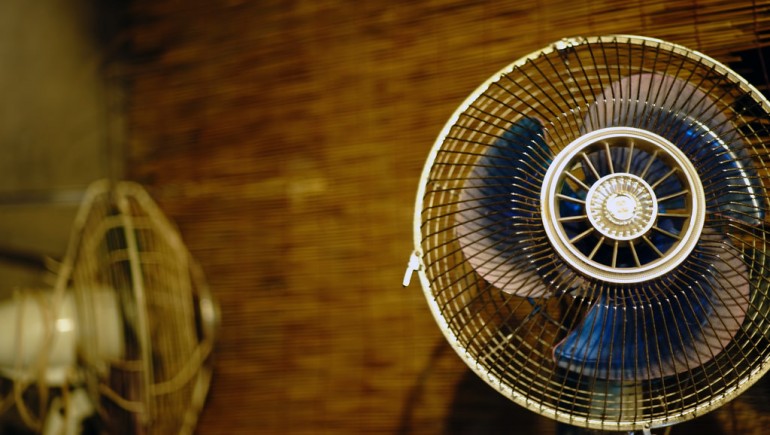Energy & environmental monitoring - helping residents keep their cool all year long
 Joe McMullen, Analyst, AgilityEco
Joe McMullen, Analyst, AgilityEco
It’s fair to say we’ve never really had much of a problem with overheating in the UK. Our homes mostly have low levels of thermal insulation and plenty of unintended ventilation (leaky sash windows and so on). A third of all of Britain’s housing is solid walled – and uninsulated solid wall properties are highly inefficient, typically leaking twice as much heat as cavity walls. So trying to stay cool is not usually an issue we hear about very often.
But with increasing numbers of social landlords undertaking a myriad of vital fabric improvements to their properties such as external wall insulation and increased “airtightness”, complaints of unhealthy summer overheating in flats are starting to become more common. Overheating is generally understood to be the accumulation of warmth within a building to an extent where it causes discomfort to the occupants. CIBSE and Arup suggest that most people begin to feel ‘warm’ at 25ºC and ‘hot’ at 28ºC, with 35ºC as the internal temperature above which there is a significant danger of heat stress. Overheating can also be caused by other factors such as lack of air movement. Sustained exposure to high temperatures will also affect comfort levels. Research suggests top floor flats in tower blocks, and modern detached houses are most at risk, particularly if they are south facing. Heat can build up during the day and, with nowhere to escape at night, leads to poor air quality and a greater risk of heat stress for the occupants. In some cases, heat stress can be fatal.
Staying on top of what’s happening with the internal environments of each dwelling has traditionally been a hard problem to solve. In larger multi-occupancy residential blocks such as tower blocks, where instances of overheating have been reported, the landlord usually has limited information about how energy is used and how other environmental factors like temperature, humidity, CO2 (stuffiness) vary over the course of a year. Landlords have in some cases attempted to install sensors to monitor these internal variables, but there are a number of reasons why this approach has been challenging. Finding a dependable monitoring solution which allows for accurate data measurement and reliable storage and transmission of the data can be problematic. There can also be issues with resident engagement and equipment damage or accidental disconnection. Furthermore, extracting meaning from the data obtained is not always a straightforward process. It is fairly simple to identify that there is a problem, but to use the data to identify the root cause can require in-depth data analysis and knowledge of building physics.
AgilityEco, in collaboration with the Building Research Establishment (BRE), has been trialling a cost-effective solution to monitoring and analysing energy use and environmental factors within residences and in internal and external communal areas. The urbaneer (Urban Residential Block Analysis for Energy Efficiency and Renewables) methodology analyses insights from the data collected which may have several applications for landlords and residents. For example, helping to ensure that any planned major retrofit works are cost optimised and don’t suffer unintended consequences.
We’ve seen many cases where, in the absence of actual data on energy use, landlords have had to make conservative assumptions (based on SAP/rdSAP default values) which often result in over-engineered solutions and excess capital expenditure. Another would be to use the data to diagnose problem blocks. Many landlords have properties in their portfolio which are a consistent source of problems including excessive cold, poor air quality, dampness, mould, and summer overheating. It is not always straightforward to diagnose the root cause of these issues, in order to plan an effective intervention.
One of the local authorities participating in an urbaneer trial had one such problem property. Following a recent retrofit, residents started complaining about overheating in their homes. AgilityEco was able to deploy monitoring equipment used in a previous urbaneer project to investigate these complaints. Sensors had already been installed in a sample of five flats in the problem block, and using these we were able identify that:
- All blocks were experiencing prolonged periods where internal temperatures exceeded CIBSE recommendations
- Internal temperatures in the monitored flats were significantly higher post retrofit than pre retrofit
- Peak temperatures in the flats were in the evening
- In some cases the flats' night storage heaters were being activated throughout the summer
- Humidity and CO2 levels fell within normal ranges.
Based on this data two probable causes of the overheating were identified. Firstly, there was unnecessary use of the heating system during the summer months. Secondly, retrofit works obviously increase airtightness and thus reduce cooling from draughts. The retrofit design had relied on installation of mechanical ventilation and heat recovery (MVHR) units to maintain comfort levels in the face of this increased airtightness, but it is clear that the units installed were not capable of regulating internal temperatures in a number of the flats.
The use of energy and environmental monitoring can help you to diagnose and avoid similar problems. For more information on urbaneer and how it could help your residents or help shape your planned retrofit works, please get in touch with our specialist team.
Photo credit
